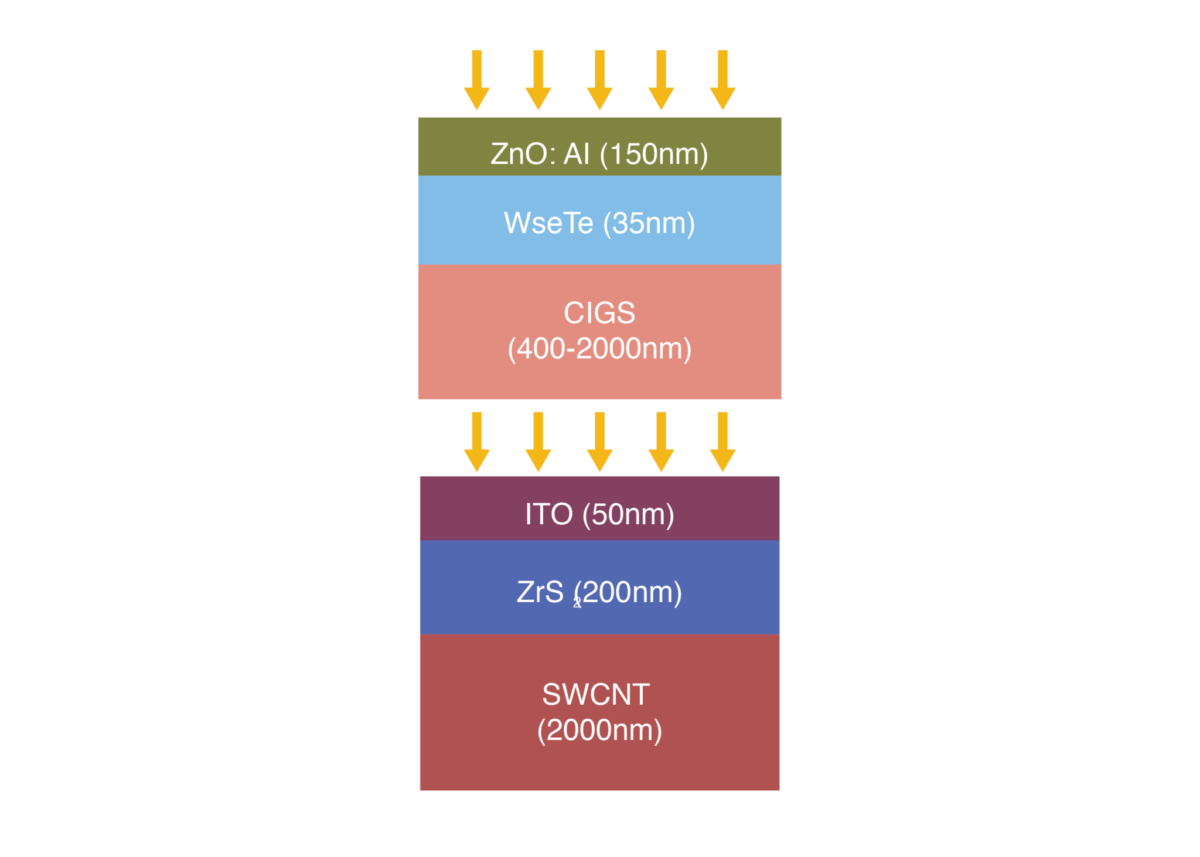First attempt to design CIGS/SWCNT tandem solar cells promises 38.91% efficiency – pv magazine India
Indian researchers have proposed to build tandem solar cells based on a CIGS top cell and a bottom cell relying on a single-walled carbon nanotube (SWCNT) absorber. SWCNTs were previously used in solar research as an alternative to conventional metal grid contacts or hole transport layers (HTLs), as they combine optoelectronic properties, flexibility, chemical stability, and simple transfer protocols.
February 28, 2024
Scientists led by the M.M.M. University of Technology, Gorakhpur in India have developed a tandem solar cell based on a copper, indium, gallium and diselenide (CIGS) top cell and a bottom cell relying on a single-walled carbon nanotube (SWCNT) absorber.
“To the best of our knowledge, this is the first attempt to build tandem solar cells based on CIGS and SWCNT,” the research’s corresponding author, Alok Patel, told pv magazine. “In the top cell, we used an ultra-thin WSeTe, which is a compound belonging to the transition metal dichalcogenide group, as a buffer layer to reduce the absorption loss. In the bottom cell, we used a buffer layer made of zirconium disulfide (ZrS2), which also belongs to the transition metal dichalcogenide group.”
SWCNTs were previously used in solar research as an alternative to conventional metal grid contacts or hole transport layers (HTLs), as they are said to combine optoelectronic properties, flexibility, chemical stability, and simple transfer protocols to cover large surface areas.
In the study “Design and performance investigation of CIGS/SWCNT tandem solar cell for efficiency improvement,” published in Optics Communication, the research group explained that they numerically optimized the solar cell via the SCAPS–1D solar cell capacitance software, developed by the University of Ghent, to simulate the novel thin-film cell design.
The academics designed the top cell with a CIGS as an absorber, an electron transport layer (ETL) based on WSeTe, an aluminum contact, and a window layer of zinc oxide (i-ZnO). As for the bottom cell, it was planned to rely on the SWCNT absorber, the ZrS2 buffer layer, and a window layer of indium tin oxide (ITO). The bottom cell has a bandgap of 1.24 eV and the upper device of 1.18 eV, which the scientists said ensures that the bottom device absorbs the higher wavelengths that are transferred from the upper cell.
The CGIS cell with a 2,000 nm thick absorber achieved a maximum power conversion efficiency of 23.69%, an open-circuit voltage of 0.7437 V, a short-circuit current density of 40.25 mA/cm2, and a fill factor of 79.15%. The SWCNT device with a 2,000 nm thick absorber achieved a maximum power conversion efficiency of 17.10%, an open-circuit voltage of 0.5653 V, a short-circuit current density of 40.36 mA/cm2, and a fill factor of 74.96%.
For the tandem cell, the scientists used a version of the CIGS cell with a 22.82% efficiency and a sample of the SWCNT device with an efficiency of 16.05% efficiency, with its combined efficiency reaching 38.91%. “This research work can help in the fabrication of efficient tandem PV cells based on CIGS and SWCNT materials,” the researchers said.
This content is protected by copyright and may not be reused. If you want to cooperate with us and would like to reuse some of our content, please contact: ed*****@pv*********.com.


